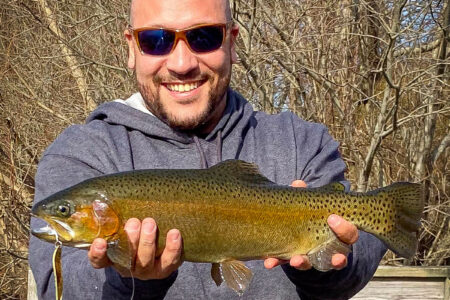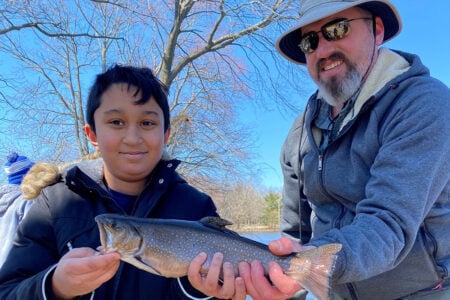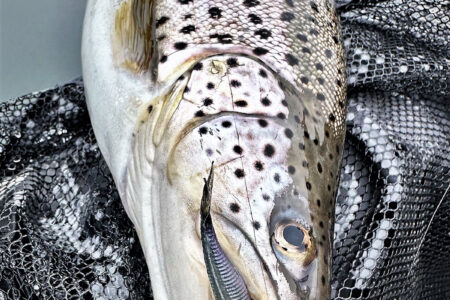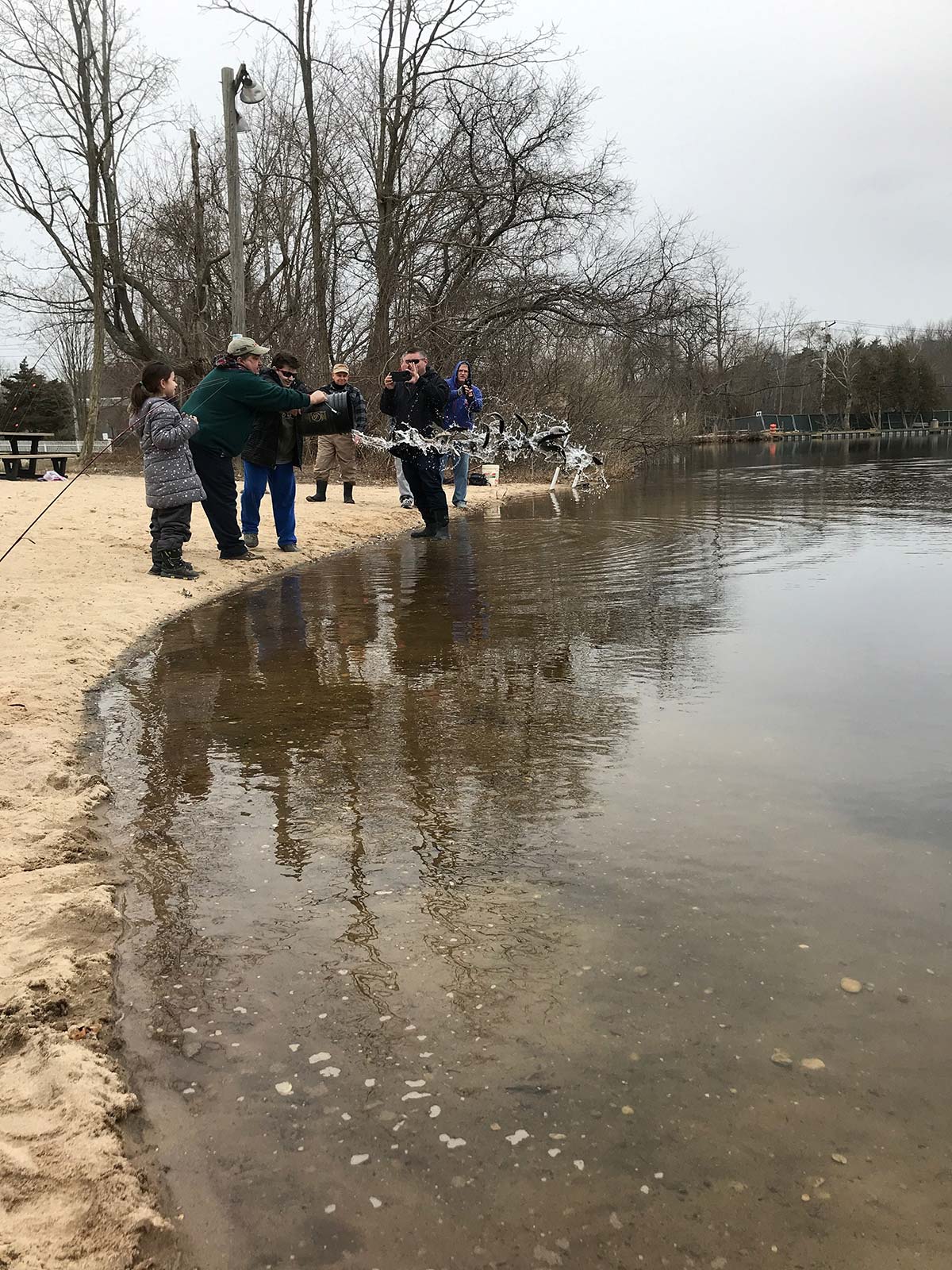
Usually, the first few days following a stocking will offer the best fishing in the sense that the fish are fresh out of the gate therefore they are slightly easier to catch.
Stockies, planters, hatchery fish, whatever name you may use to describe them, the trout stocking season is finally upon us. I personally still love trout stockings because to me it marks the unofficial start of spring. With the year we’ve all had in 2020, seeing those trucks roll in to supplement our lakes, ponds, and streams should be a welcomed sight for all looking to get out of the house for a bit.
Here on Long Island, we have a year-round season in regards to trout fishing but with some newly added fish to our waters, the action should provide an open door before the saltwater scene starts to kick up. Be sure to check out the NYSDEC website for stocking information, make sure your fishing license is up to date and head out to take advantage of this early season treat. If however, you’re new to this type of fishing, here are some pointers and tips to help get you going.
Early Bird
The early bird gets the worm is how the expression goes and this is no different here. While spring trout fishing can be a very fun experience on light tackle, it is also a very popular one amongst local anglers. It’s for this reason I try to get in on the action as quickly as possible after the fish are put in. Usually, the first few days following a stocking will offer the best fishing in the sense that the fish are fresh out of the gate therefore they are slightly easier to catch. Don’t let the fast-paced action fool you however because the trout do tend to smarten up quickly. Add in some angling pressure and the action dies off quickly but that doesn’t mean it stops completely.
After the fish smarten up or have been caught and put on a stringer I use another tactic of the early bird motto to keep myself in the flow of things by altering my fishing times. This means getting down to the water very early in the morning, sometimes right as the sun creeps up over the horizon. I’ve often found that trout feed best during times of low light which translates into planning to fish in either the very early morning or right before sunset. I choose the morning session over the afternoon because as the afternoon progresses, you are likely to see more anglers on the water. Pick a time that works for you and give it a shot but generally speaking very early or late is the way to go.
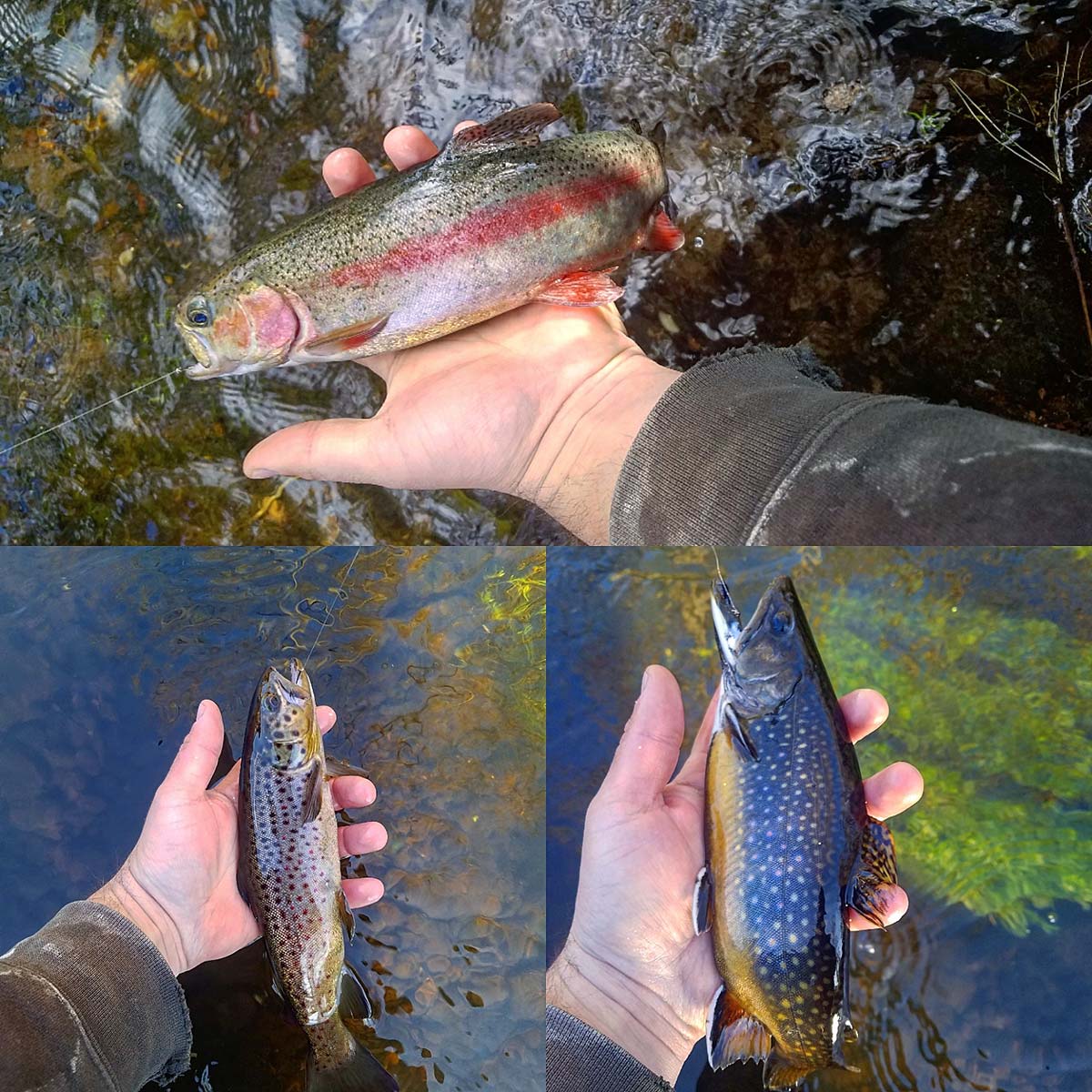
Trout Types
Now that we’ve looked at when the best times to trout fish are, we can concentrate on the different types of trout we have locally and how each one’s behavior is different yet similar. On Long Island there are three types of trout stocked each year in the forms of rainbow, brown, and brook trout. Most if not all of the trout you should encounter will be either browns or rainbows yet on some very specific bodies of water, you may also encounter brook trout. The rainbows usually run a bit smaller and are easily identified by the red/pinkish stripe that runs down their sides along with being covered in black dots from head to tail. Brown trout are the more sought after species in the sense that some of them can reach upwards of 15 inches. Browns (like their name describes) have a brownish/gold color to them with large black dots from head to tail. Brook trout (in the select areas you may find them) look completely different in the sense that they are usually darker in color with some spectacular colors in the form of red or orange bellies with blue dots haloed in white running down their sides. Brook trout can also be easily identified by their fins which will always be white on the tips.
Out of all the species mentioned, I do personally find browns to be very aggressive in terms of chasing down and striking lures or flies, yet at times they can be very picky and choosy especially after being hooked once or twice. Browns tend to favor flashy lures so it’s a good idea to keep with you some small inline spinners or spoons when seeking out brown trout. Many standard trout baits work well for browns but I find I have the most success on nightcrawler or dough baits. Flies can vary but have with you a wide range of nymphs in natural colors in sizes ranging from 12 to 16 and carry a few streamers in sizes 6 to 8.
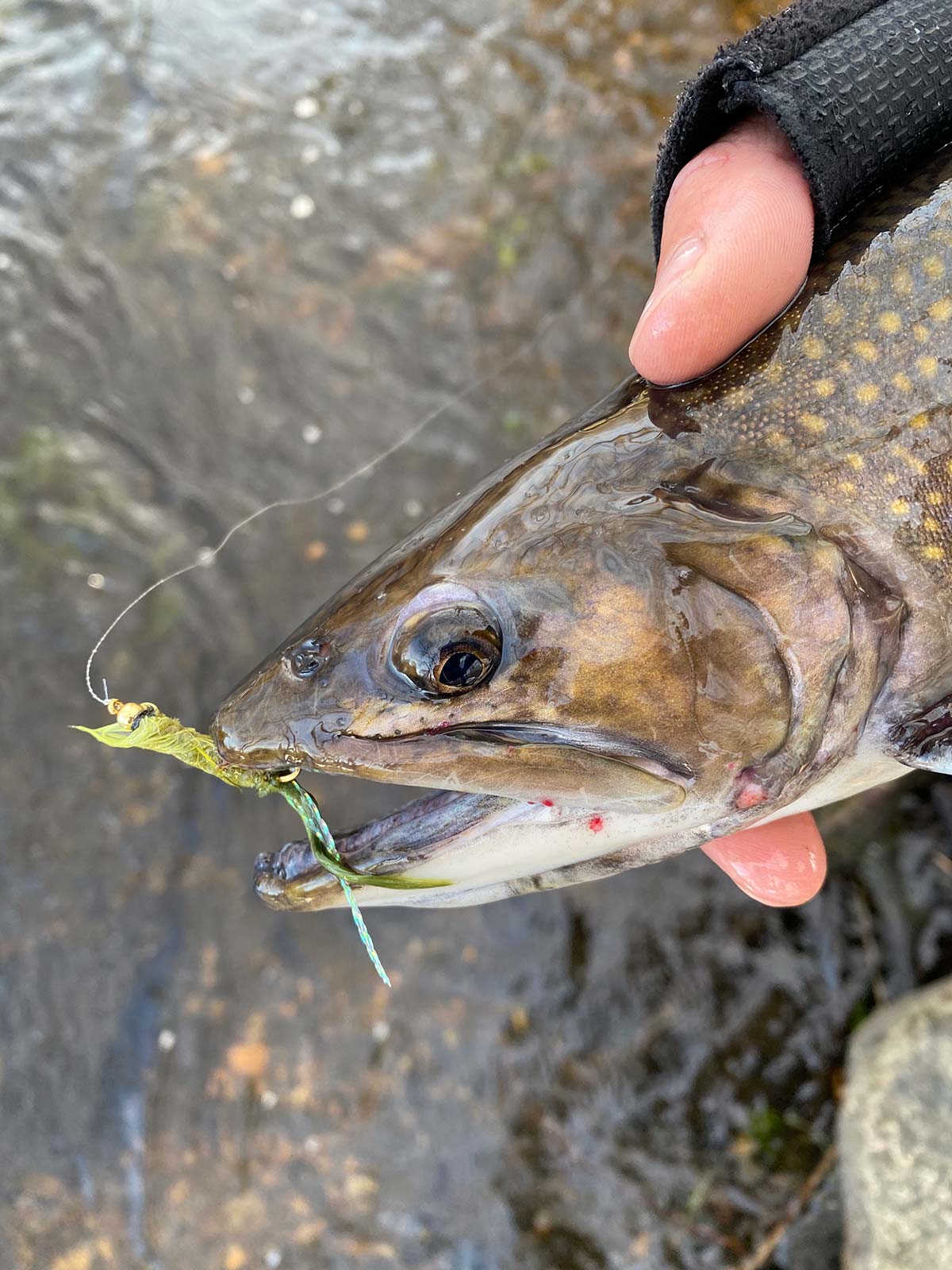
Rainbows I find to be less aggressive than the browns and usually after a stocking they don’t make themselves as well known. Knowing where to look for them however, can help in a big way. I usually find most if not all of the rainbows to gravitate towards the deeper portions of a lake or pond. I also find that most of the rainbows stocked on our ponds respond better to bait than they do with lures. If however, you are looking to tempt a few rainbows with strictly lures, I’d scale down the size of any spinner or spoon you are using as the rainbows tend to be slightly smaller than the browns. As far as bait choices go, for some reason rainbows are suckers for salmon eggs and they tend to eat them more than other trout species, but other baits include small pieces of nightcrawlers and Powerbait dough balls. Fly selection is pretty much the same as what I carry for brown trout but also throw in some bright patterns in colors such as pink, yellow, orange, and chartreuse.
Now we come to brook trout which is last on our species list. Like I said before most if not all of the trout you will encounter will come in the forms of either rainbow or brown trout yet there are a few select bodies of water that play host to brook trout. Within the confines of Connetquot State Park (special fly fishing only regulations apply here) is one of those areas where a good portion of the fish you may catch will probably be brook trout. Brookies are relatively easy to catch in that they will eat almost all of the baits mentioned, and will strike at pretty much any trout lure or fly you may throw at them. I tend to find brookies to be less selective than say rainbows or browns in regards to fly selection, but be sure to have with you a wide range of flies to ensure you have what they want for that particular day. Also, it is very much worth mentioning that brook trout on most bodies of water have special no-kill regulations so keep this in mind if you do happen to catch a brook trout or two.
Light Is Right
So the last tidbit of information you’ll need to get started is what gear to bring along with you and luckily for our purposes, it’s pretty simple. As far as spinning rods go I carry a 5- to 6-foot ultralight rod with a matching reel spooled up with 4-pound test monofilament line. You can find a complete setup in most tackle stores for relatively cheap and there isn’t any need to get too expensive for this type of fishing. For fly gear, I’ll stick with a 9-foot, 3 or 4 weight matched with a floating line. Again there’s no need to go crazy spending lots of money on the gear as this fishing is very simple and easy to do.
It would probably be in your best interest to bring along with you a decent pair of waders as most of the lakes, ponds and streams we have are limited in terms of shore access. I always carry my waders with me because it helps me spread out a bit when the crowds get heavy. I also like having waders because it allows me to explore a little more instead of strictly being limited to one spot.
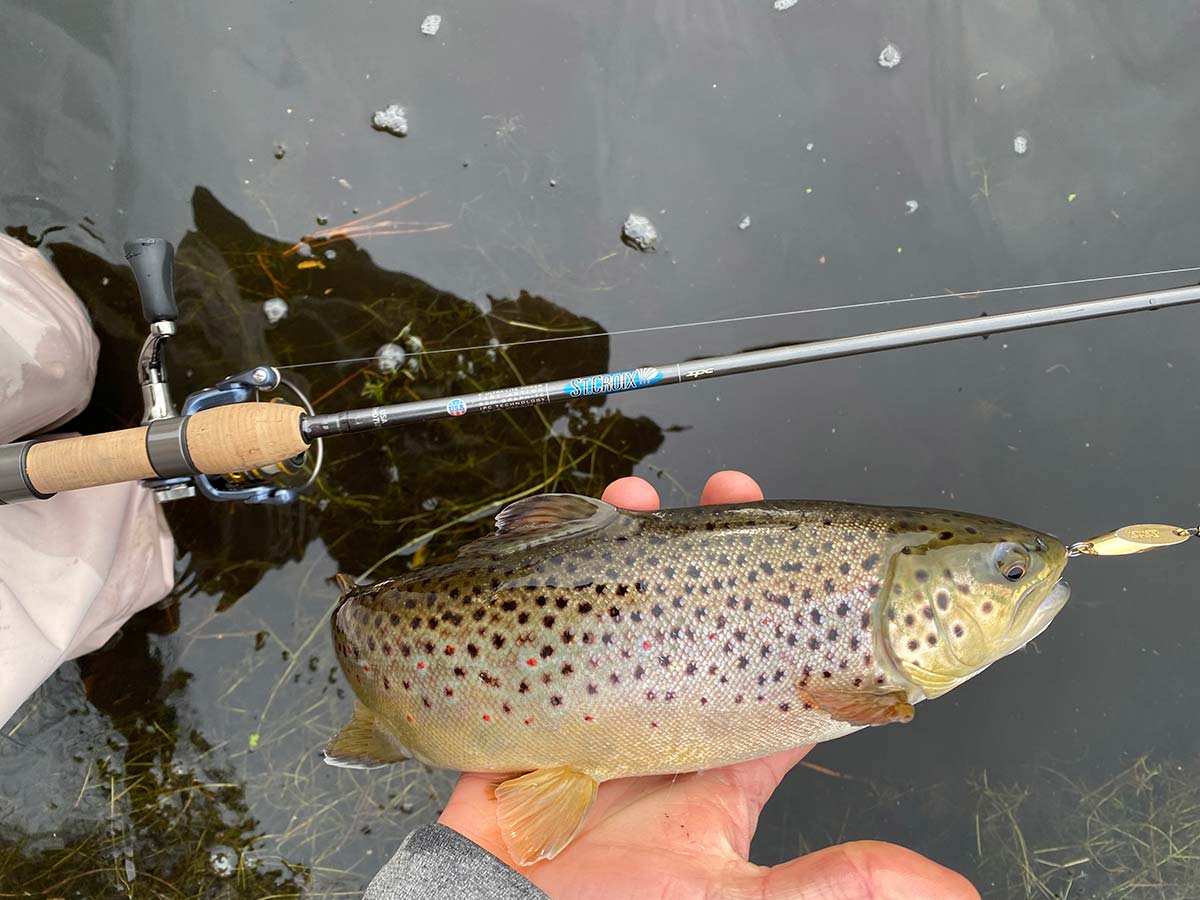
Have Fun
I think one of the biggest appeals to this early season fishing is the fact that anyone can do it. I always see a lot of younger anglers making their way to get in on some trout action every year and I also see anglers of all types hitting the water. With that being said I personally like to release most if not all of the trout I catch for the reason that there are a lot of younger anglers fishing for them. To me, I’d rather see someone who hasn’t gotten the chance to hook into a trout or two to have the opportunity of doing so. If however, you’d like to keep a fish or two for the table, be sure to follow the local regulations as the DEC local enforcement does check up on waters stocked with trout with regularity. It’s also worth mentioning that you will need a valid freshwater fishing license as well. Without one may lead to the issuing of a ticket and I’m not sure about you, but I try my best to avoid tickets at all costs.
With some local knowledge and a little planning, however, you can easily take advantage of this fun spring tradition. I look at it as the first wave of fishing as the new season dawns upon us. Warmer brighter days are sure to follow but for now, the time is right to take a crack at some trout that will be coming to a body of water near you. Some scoff at the idea of catching a fish that came from a truck but to me, it brings me back to being a kid skipping school for “Opening Day.” Sure these fish may not be as glamorous as some of their wild mountain relatives but there’s a lot they can teach us as anglers both new and old. Seeing that stocking truck roll up to a lake or pond always takes me back to what made this so special to begin with all those years ago, and that’s something I think everyone should experience at least once.
